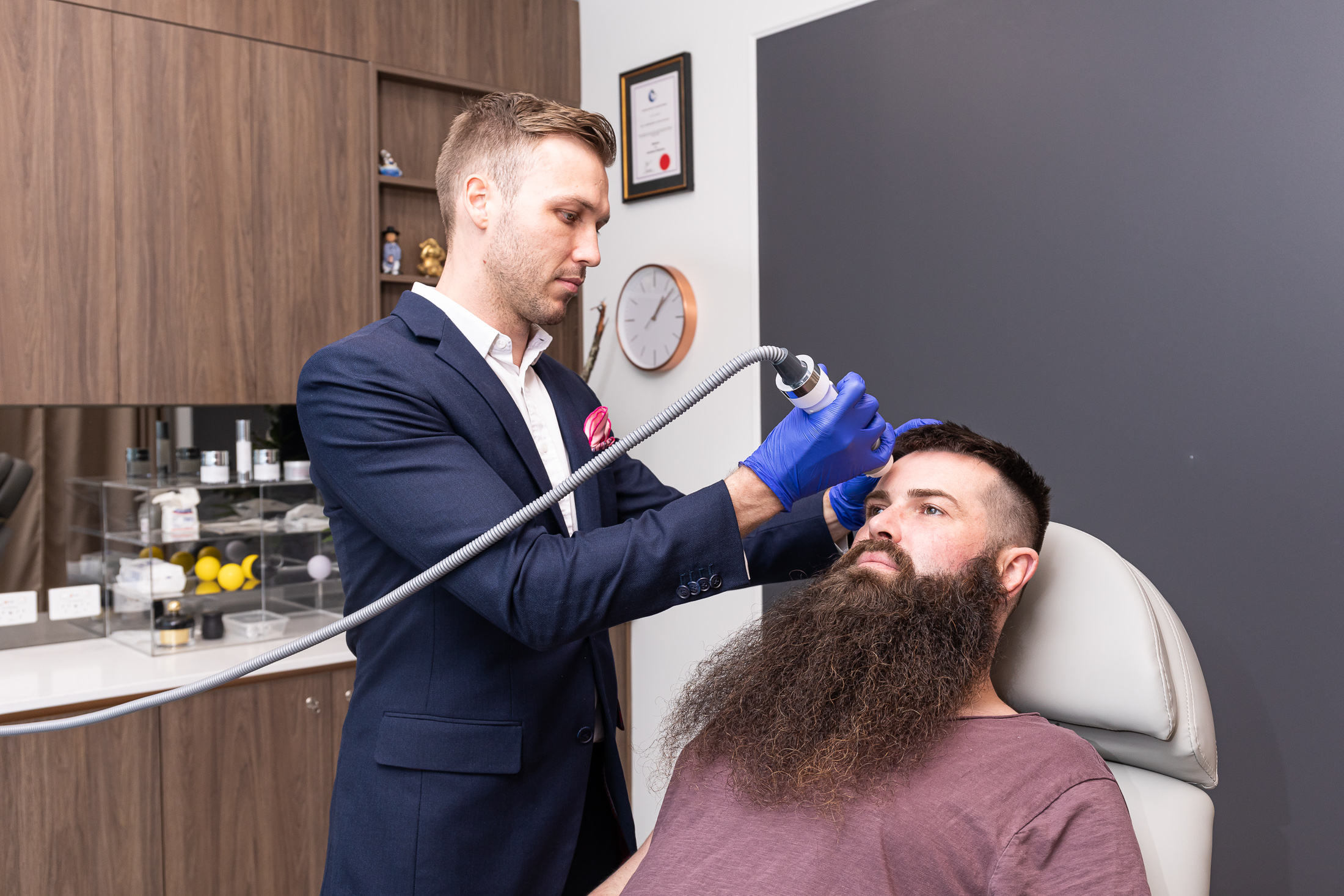Dermal filler injections are one of the most popular treatments in the cosmetic industry for enhancing and rejuvenating the appearance of the face. While widely considered a low-risk treatment in trained hands, many patients are still frightened of the risks of dermal filler. From skin damage to blindness, the risk of dermal filler complications can frighten people away from having what could otherwise be a life-changing treatment. While nothing will ever compare to the safety of having your dermal filler by a clinician with extensive training and experience, a newer method known as ultrasound-guided dermal filler injections has gained significant attention in recent times. But what exactly are ultrasound-guided dermal filler injections, and is it just a passing trend or the future of safety in cosmetic injectables? In this article, we will explore how ultrasound may potentially change the practice of cosmetic medicine, how it can improve safety, and also how it can make a safe procedure much more dangerous.
Ultrasound technology has been around for decades, and has changed the practice of medicine. It is a simple, non-invasive way to visualise tissue beneath the skin and identify anatomical structures, and diagnose certain diseases and medical conditions. Ultrasound uses high-frequency sound waves to produce images. It works by emitting sound waves that bounce off internal structures of the body and return to a device called a transducer. The transducer converts the reflected sound waves into images that are displayed on a monitor.
In the context of dermal fillers, ultrasound can be used to map out planned treatment areas and identify key structures that must be avoided during the treatment. It can also be used to track the progress of your treatment in real time, assess the location of previously injected dermal fillers, and to identify and treat dermal filler complications. Advocates of ultrasound guided dermal fillers injections claim that it reduces the risk of complications, enhancing patient safety.
However, currently, there are no strong studies demonstrating that ultrasound-guided dermal filler injections improve outcomes and reduce risk. While theoretically they might, theory doesn’t always translate into practice. Just because a clinic offers ultrasound guided injections of dermal filler does not mean that the treatment will have no risk, and does not guarantee a result.
Skilled sonographers who specialise in performing ultrasound scans spend years learning how to perform them correctly and accurately. Incorrect use of ultrasound may significantly increase the risk of your cosmetic treatment by giving clinicians a false sense of security, meaning they may be more likely to inject in risky ways, and inject areas that are beyond their scope of practice and training. Some things to seriously consider when clinics advocate their treatments because they are done under ultrasound guidance include:
- What experience do the practitioners at the clinic have? The use of ultrasound is unlikely to replace training and experience in reducing risk through safe injection techniques.
- How much experience do they have with ultrasound? Most practitioners will have just bought the device and done a weekend course. This means that the ultrasound is unlikely to be performed correctly, increasing risk through a false sense of security.
- Will the use of ultrasound make the injector take unnecessary risks because ultrasound is giving them confidence they otherwise would not have?
- Does ultrasound actually result in better patient outcomes (either with a better result or risk reduction)?
- Does the use of ultrasound increase the severity of complications because injectors think they are in the clear when they in fact are not?
Nothing is ever likely to replace safe and experienced techniques when reducing the risk of dermal filler injections. The same debate has occurred countless times with previous techniques and tools. The use of a cannula vs sharp needle, to aspirate or not aspirate. Both the use of a cannula and aspirating before injecting were claimed to be safer techniques, and while they may reduce the likelihood of a complication, some of the worst complications have occurred when dermal filler has been injected with a cannula and after aspirating. Ultrasound is no different, and from previous experience, the overconfidence that comes with these practices that emphasise ‘safety’ often expose patients to a much higher risk than they would be if practitioners simply remained cautious and conservative, and stuck to safe technique.
Ultrasound may have utility in improving dermal filler safety, but mainly with the treatment of complications by allowing precise dissolving of dermal filler that has caused the issue. It pays to be cautious when visiting clinics who offer ultrasound, as they may be using it as a marketing ploy to make you feel more confident with the treatment. The use of ultrasound when done correctly has a number of advantages, but always ensure that your practitioner has the appropriate training and experienced to use it effectively. Overconfidence from using ultrasound may significantly increase treatment risks, and as such you should always visit an experienced, doctor-led cosmetic clinic for your cosmetic injectables.


